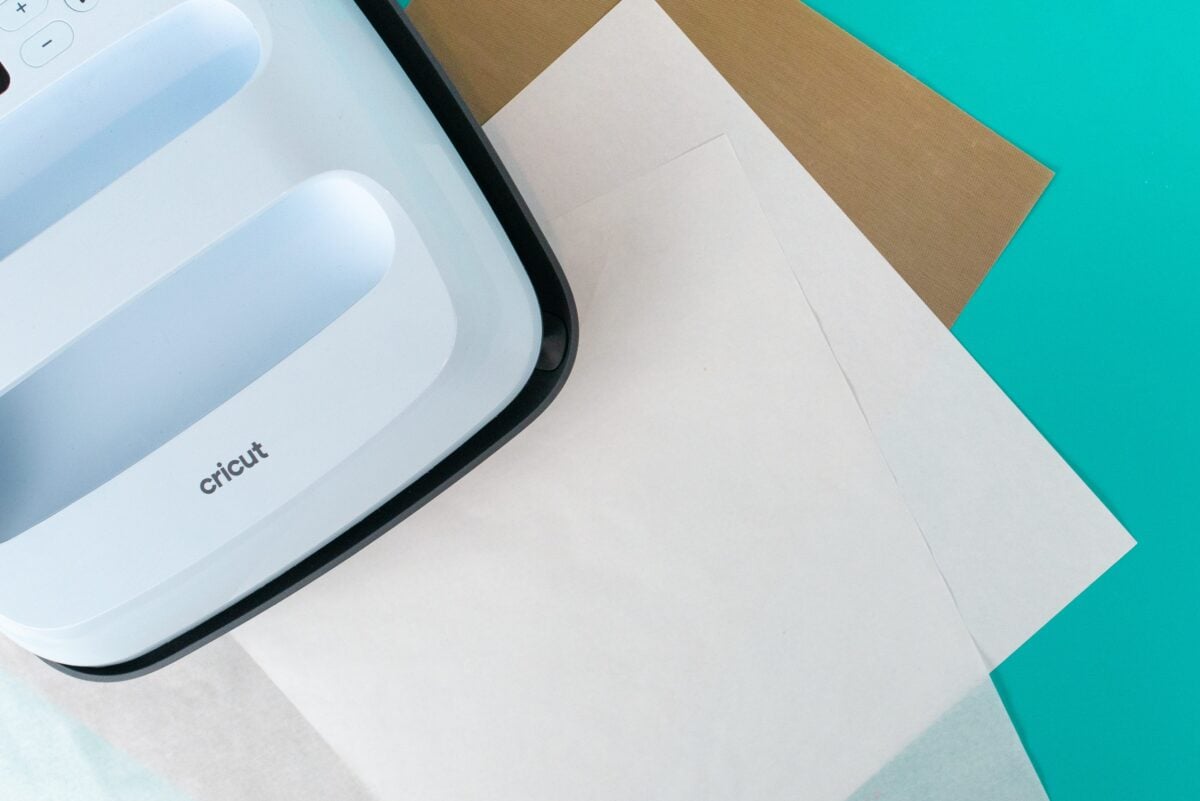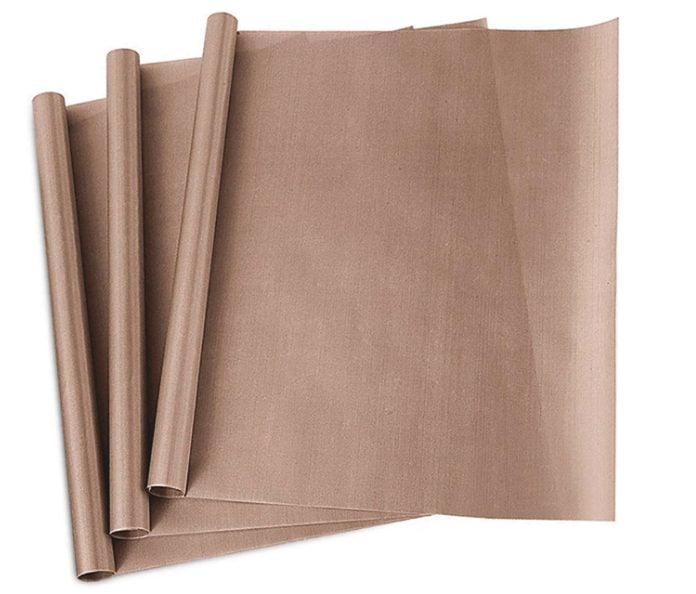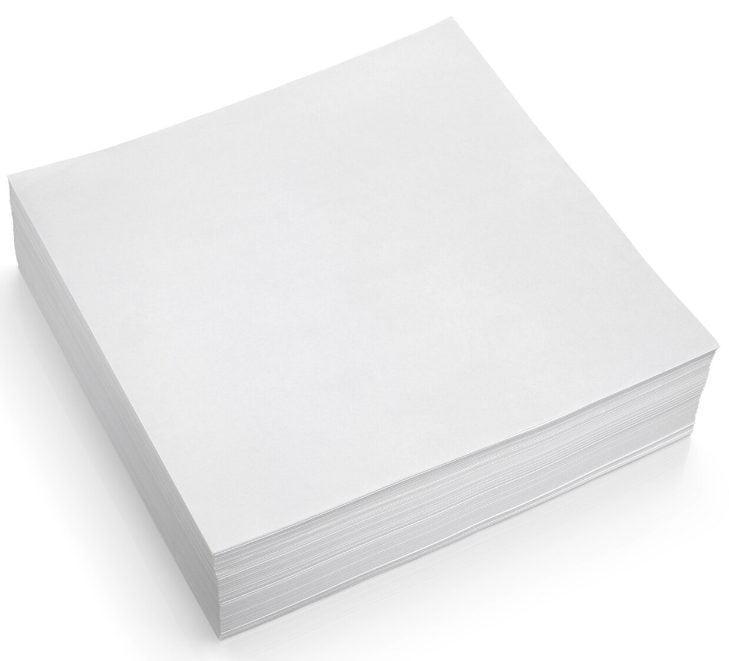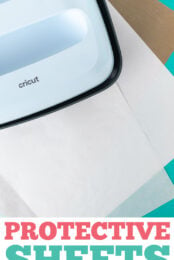Whether you’re using HTV, sublimation prints, DTF transfers, or white toner prints, the options for pressing papers and sheets can be confusing! Here’s your go to guide for choosing the best protective sheet for your heat transfer project.

When working with heat transfer vinyl (HTV), DTF transfers, sublimation, and white toner printing, choosing the right protective sheet can make all the difference in the quality and success of your project. But there are a lot of options—do you want butcher paper (and what color?), parchment paper, a teflon sheet, or wax paper? It can be confusing and I get a lot of questions on what to use.
The right sheet protects your design and your press, ensures even heat distribution, and prevents damage to your projects. In today’s post, we’ll explore the best options for your specific needs. To be perfectly honest, I have three out of the four on hand at all times since they work in different ways!
Watch the Video
Want to get a video overview of all of the protective sheet options? Just hit play below! Or keep reading for a written explanation!
Wax Paper
Put that back in your kitchen, my friend! Wax paper is coated in wax (I know, shocking) so it shouldn’t be used for heat press crafting. The was will melt, ruining your project and potentially your press!
Teflon Sheet

Let’s start with the teflon sheet. A teflon sheet is a heat-resistant, non-stick sheet made from polytetrafluoroethylene (PTFE), which is commonly known as teflon. You can even get a teflon sheet cover for the top of your heat press. Because it’s non-stick, it’s great for many crafting applications…but not all of them!
Teflon Sheet Best Uses
- Ideal for HTV. Use for a post-press after you have peeled back the carrier sheet.
- Can be used with white toner printing, but most professionals suggest parchment paper instead.
Teflon Sheet Pros
- Reusable and durable for long-lasting use.
- Non-stick surface.
- Provides even heat distribution.
- Easy to clean if needed.
Teflon Sheet Cons
- Holds in moisture, which is particularly bad for sublimation.
- Can permanently stain with sublimation, which can then transfer the design to future projects.
- Higher initial cost compared to disposable options.
Butcher Paper

Butcher paper is exactly what it sounds like: it’s a paper that butchers use for wrapping pieces of meat for you take home from the deli.
Butcher paper is uncoated and usually comes in white or brown. I recommend using white so you don’t have any color transfer on your projects. It also comes in rolls or in sheets. I love the 12×12 sheets—they are perfect for most projects and I don’t have to deal with the paper curling.
Butcher Paper Best Uses
- Ideal for pressing sublimation prints and DTF transfers.
- Can be used with HTV or white toner printing, but it may stick.
Butcher Paper Pros
- Protects your heat press from sublimation ink transfer.
- Uncoated surface won’t leave anything behind.
- Inexpensive and widely available.
Butcher Paper Cons
- Generally single use for sublimation if there is any ink transfer (can be used more times for DTF transfers).
Parchment Paper

While it looks a lot like butcher paper, parchment paper is actually coated with a very thin layer of silicone, making it non-stick. This is why it’s so great for baking cookies—they slide right off! Parchment paper has some good crafting applications as well.
Parchment Paper Best Uses
- Ideal for the first press with a white toner print. It won’t stick to the toner.
- Can be used with DTF transfers, but butcher paper is even less expensive so that’s my preference.
- Can be used with HTV.
Parchment Paper Pros
- Non-stick surface.
- Inexpensive and widely available.
- Can be used many times.
Parchment Paper Cons
- Holds in moisture, which is particularly bad for sublimation.
- Not as durable as a teflon sheet and has limited reusability.
Wax Paper
Wondering if you can substitute wax paper for any of the above? Don’t! Wax plus heat = a totally sticky mess. Wax paper is not suitable for any heat transfer project and has the potential to ruin both your project and your heat press. Put that back in the kitchen cabinet and only use it for food applications where it makes sense.
By Application Type!
Let’s break it down by which type of craft you are doing:
- HTV: Teflon sheet or parchment paper
- Sublimation: butcher paper
- DTF transfer: Teflon sheet or butcher paper (can use parchment paper in a pinch)
- White toner print: parchment paper
I hope this post helped you decide on the best protective sheet for your project! As always, if you have any questions, let me know down in the comments.




Leave A Reply!